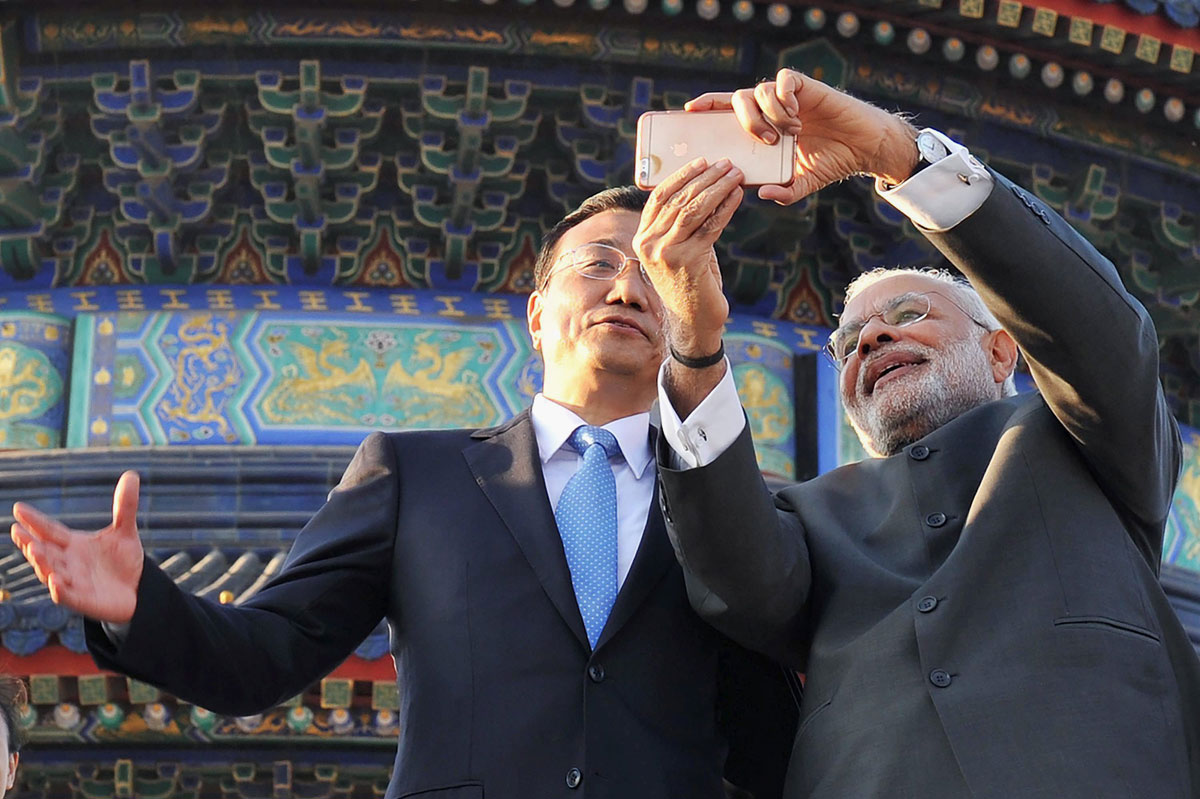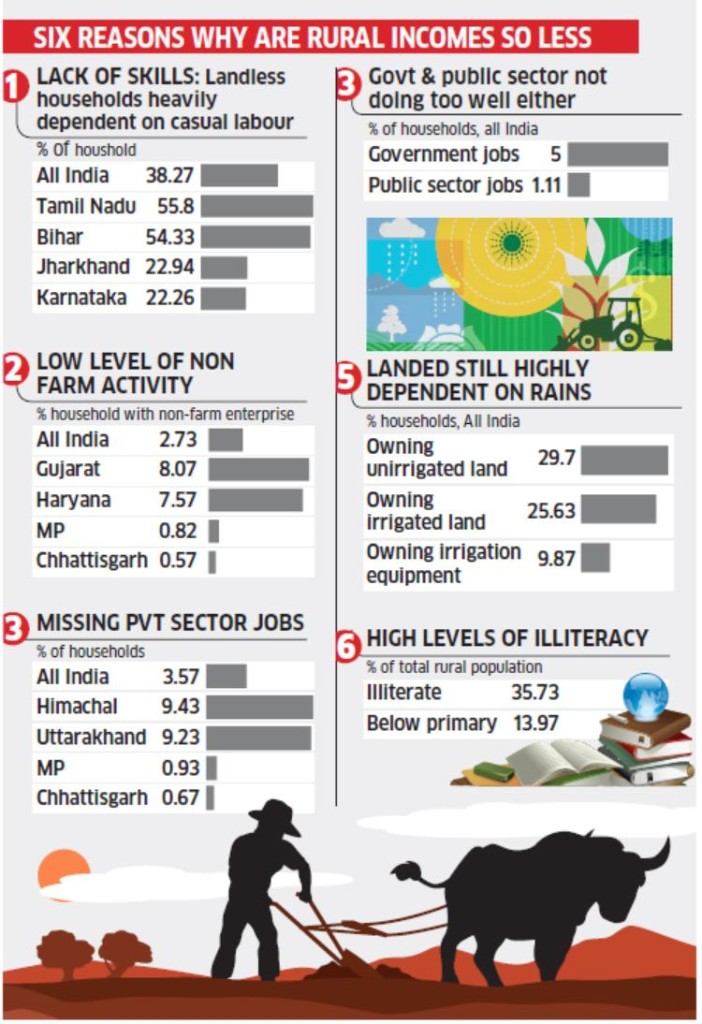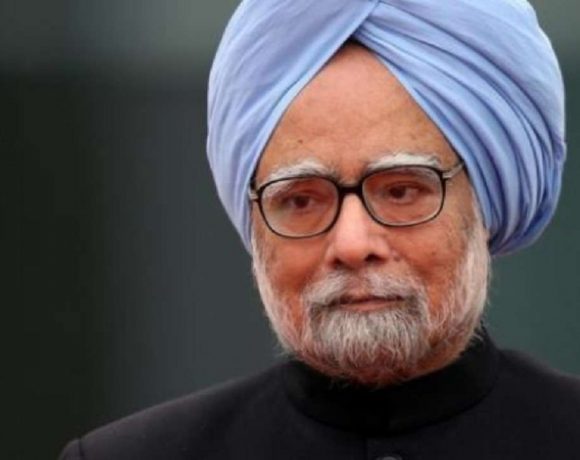

India has become a USD 2 trillion economy now, according to a World Bank report.The report stated that India’s GDP crossed the USD 2-trillion mark in 2014 and at present stands at $2.067 trillion.In just seven years, India has added one trillion to its economy.The gross national income per person has also risen to USD 1,610.Yesterday, Reserve Bank of India Governor Raghuram Rajan said that the Indian economy was in a recovery phase.”I would say (economy is) picking up. We see some signs of capital investment picking up. There is a continuing need, which the government is trying to address, of putting some of the stalled projects back on track,” Rajan said. Rajan also made it clear that India’s exposure to Greece crisis was very limited.”The direct exposure is very limited for India. But there is some indirect exposure like how the Euro would react to the Greece situation,” he said.He added that exports remained an area of relative concern but they have been weak across all Asian economies, barring China.On Monsoon, Rajan said that the news on the rain front has so far been good.
India is among the world the fastest growing economies this year.
Time for Lawmakers & Central Government to scan indianeconomy on both micro & macro level, India is yet to stand tall pic.twitter.com/xpd4VgMSGj
— Indian Affairs (@Indian_Affairs) July 7, 2015
After Moody’s, global rating agency Fitch has cast doubts on the pace of growth in the Indian economy. In its Global Economic Outlook Report, Fitch has said that the acceleration in the Indian economy might be slower than previously expected.It has also cut India’s economic growth forecast to 7.8 per cent this year, from 8 per cent earlier, and said that the country’s business climate is relatively weak compared with peers, and will take some time to turn around.Fitch’s view follows Moody’s warning that there was “some disappointment” over the pace of reforms under the Modi government.However, at 7.8 per cent, India’s economic growth would surpass that of China. The rating agency said that it expected India’s GDP to surpass that of China’s for the first time since 1999, and said, “India is going to be lifting the growth rate in the region.”
For 2016, Fitch has forecast an acceleration in India’s economy at 8.1 per cent, which is lower than 8.3 per cent forecast earlier.
It is necessary and useful to juxtapose the rhetoric of Prime Minister Narendra Modi’s government with the facts of the economy. India might be growing faster than China but that cannot be much solace to the people of the country because it is a statistic that will not mean much as there is no significant movement in the economy in the short run. The first year of the BJP-led NDA has not been impressive in the financial sector, which is the reliable indicator of the health of the economy. The RBI in its Financial Stability Report (FSR) has observed that “the banking business has slowed down because of decline in deposit and credit growth” as of March 2015.
India’s economic growth is quite crucially dependent on the public sector banks (PSBs). They have to shoulder the responsibility of providing the finance to push growth. Private sector banks cannot do it. They are too small.
A government battling one scandal after another – at the moment, it’s Coalgate, Truckgate and rumours of an army ‘coup’ (!) – is in no position to push through any sort of economic reforms. A politically weak UPA is too busy firefighting and containing the fallout of the numerous scams seen during its tenure.The government also has very little money to boost the economy itself through investments, and a high fiscal deficit (estimated at 5.1 percent for fiscal 2013) will limit its appetite to spend freely to boost consumption. If anything, austerity in some form may be on the way.Meanwhile, sectors ranging from power to aviation hang in limbo as they await progress on numerous issues. Given the ruckus that occurs every time Parliament is in session, they might be waiting a long, long time.
Foreign banks do not have much role in this growth story. But it is the PSBs which are burdened with bad loans, also known as non-performing assets (NPAs). It should not come as a surprise that the NPA share of the PSBs is the highest.
The temptation to indulge in equating the problem of NPAs to crony capitalism has to be resisted because it is the easy way out for turning away from the real issues. Bad loans are part of the inevitable risk element in banking but they need to be contained. One of the ways of doing so would be an increase in credit outflow or growth in credit. But the PSBs seem to be caught in a vicious circle. RBI Governor Raghuram Rajan had said that the banks would not be able to cut interest rates because of the NPAs. He was of the view that the burden of the NPAs could ease in the next few quarters. The stress tests — creating worst case scenarios to check the financial resilience of the banks, an exercise that has come into vogue post-2008 — indicate that the banks’ NPAs are above water. This means there is no trouble as of now, but trouble is not too far away. Now, that is not an optimistic scenario.
It is the profile of credit flows as indicated in the FSR that gives a fuller picture. The “stressed assets” of the PSBs stand at 13.5 per cent of all advances as of March 2015. The stressed assets have the potential to turn into NPAs. The corresponding figure of stressed assets for private sector banks is 4.6 per cent. The more important aspect of the credit outflow is that the industrial sector shows a very high 17.9 per cent of “stressed advances”.
The corresponding figure of stressed advances for services is 7.5 per cent. What these figures mean is that activity in the industrial and service sectors are not doing too well because of low or sluggish demand. In contrast, the credit outflow in the retail sector is quite robust with the advances from the private banks standing at 27.7 per cent from private banks and 17.1 per cent from the PSBs. The “stressed advances” for this sector are a mere two per cent.
Within the industrial sector, it is mining, iron and steel, textiles, infrastructure and aviation which together account for 24.8 per cent of advances, but these are also the ones which account for 51.1 per cent of the “total stressed advances”. Infrastructure and iron and steel alone account for 40 per cent of stressed advances. Of course, these are figures for the four years between March 2011 and March 2015. It is possible for finance minister Arun Jaitley to say that these are “legacy issues”. That is, these are problems which have been inherited from the previous government, and that the present dispensation is not responsible for the problems of “stressed advances”.
The reasoning may be right but Prime Minister Modi and his colleagues cannot continue to blame the Manmohan Singh government for too long. Sooner than later, this government will have to think of ways of tackling the problem.
The problem is: Private sector firms have been helping themselves liberally with loans from the PSBs for infrastructure projects. Some of them have been struck at the level of governmental clearances. The private sector squarely blames the government, and the government points the finger at the environmental restrictions. The Modi government seeks to cleverly and quietly remove the “thorn” of environmental concerns. There is a clear fight between good and evil, with the opposition parties taking their place in the ranks of the good.
The solution to the problem of environmental clearances does not lie in doing away with the restrictions but putting in place reasonable rules based on public debate. There will be dissent, but the majority needs to be convinced. The majority cannot be hoodwinked in the process of browbeating the minority dissenters. This is just an aspect of the issue as to why infrastructure projects, including mining, are not taking off.
There is, however, another side to the problem: The failure of the private sector to perform even when there are no hurdles in the way. Some of the NPAs arise from the wilful non-performance of the private sector firms. There is a need to penalise them if the government wants to win the confidence of majority of the people in the matter of environmental clearances.
The only solace that Team Modi can derive is that the NPAs have not deteriorated much in the last two years. There are minor fluctuations. It is expected that the Gross Non-Performing Assets (GNPA) could go up 4.8 per cent in September 2015 (it was the same in December 2014) from 4.6 per cent in March 2015. This could modulate to 4.7 per cent in March 2016. It is a long haul, then, from the brink to a safe place and then to higher ground.
The performance of the banking sector is a crucial indicator of the health of the economy. There is need for an increase in deposit and credit growth, and the credit outflows should have a lesser proportion of “stressed advances” than is the case now. It would not serve any purpose to blame the government for the not-so-bright situation because governments and their leaders, whatever their delusions about their ability to change things, cannot do really much if the general or macro situation is not good.
Indian economy will accelerate in the short term as it benefits from low commodity prices, but in longer term, speed and scope of reforms remain a key uncertainty, a global research firm has said.In its report — India’s economy: the new China? — Wood Mackenzie said India will be an increasingly key market with its fast-growing working age population, energy demand and GDP.”Broad-based economic indicators are still improving. Our view is that Modi’s reforms, though gradual, are making a positive impact on the economy in the short term. It will take time for the new government to work through its proposed reform agenda,” the report said.Wood Mackenzie projected India’s real GDP level to overtake Japan and reach over USD 6 trillion by 2035.
“However, China will remain the largest contributor to global GDP and energy demand growth despite its economic slowdown,” the report said.It, however, cautioned that the pace of reforms of the Narendra Modi-led government could disappoint due to opposition at the central and state levels.Key landmark proposals, such as Goods and Services Tax and land acquisition bills, are facing opposition in the Rajya Sabha. State opposition has also delayed the development of key infrastructure.BJP-led NDA, which came to power in May 2015, has the required numbers in the Lok Sabha, but in the Rajya Sabha it lacks a majority.”Its (India’s) economy is expected to accelerate in the short term as it benefits from low commodity prices and modest progress in Modi’s reforms. However, external shocks, including weather related shocks, cannot be ruled out.”Longer term, the speed and scope of reform remains the key uncertainty. Deregulation, infrastructure build, and robust job creation are necessary to unlock India’s growth potential,” the research firm said.It said market sentiment over reforms have been generally positive and reflected in the rise of India’s equity market. The government has liberalised the coal sector, eased foreign direct investment (FDI) regulations, and undertaken fuel price reform.

“India is rising. Its working age population is projected to grow over 200 million to reach 1 billion by 2035, accounting for one-fifth of the world’s working age population. Real GDP growth is expected to accelerate in the short term and remain robust longer term compared with other key economies,” the report added.Wood Mackenzie also projected India’s energy demand to grow 370 Million Tonnes of Oil Equivalent (Mtoe) to reach 1,183 Mtoe by 2025. “After China, India will be the second largest growth region in the world in terms of energy demand. This presents significant opportunities for investment in the currently energy-constrained India,” it said.


















